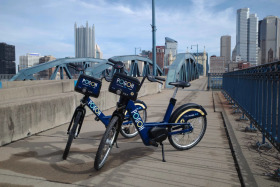- September 20th, 2023
- 0 Comments

The use of electric bicycles (e-bikes) is growing rapidly in the U.S. as e-bikes present an opportunity to reduce car travel, improve health, and increase access for traditionally underserved populations. The relationship, however, between e-bikes and safety, infrastructure, equity, and the environment is not fully understood and remains of interest to decision makers and potential riders. The Federal Highway Administration (FHWA) is advancing research on e-bikes to better understand e-bike trends and impacts, and how jurisdictions around the country are managing them.
For an overview fact sheet on e-bikes, see the FHWA E-bike fact sheet. And for descriptions of other FHWA initiatives and research relevant to understanding e-bikes, see Electric Bicycles (E-bikes) Research.
What are e-bikes? E-bikes are similar to conventional bicycles but have a small electric motor and battery. E-bikes are commonly used as personally owned bicycles, in bike share fleets, for urban freight delivery, as adaptive bicycles for people with disabilities, and as mountain bikes on recreational trails. E-bikes are generally charged using standard household power or, in the case of bike share systems, at docking stations.
- Class 1: pedal assist, max assisted speed of 20 mph
- Class 2: throttle assist, max assisted speed of 20 mph
- Class 3: pedal assist, max assisted speed of 28 mph
There are two main types of e-bikes: pedal-assisted bicycles and throttle-assisted bicycles. A rider must pedal a pedal-assisted bicycle to engage the electric motor, whereas a rider may pedal or use a handlebar-mounted throttle to engage the electric motor of a throttle-assisted bicycle. For most e-bike related projects eligible for Federal-aid highway program funds, the definition for e-bikes is codified in 23 U.S.C. 217(j)(2) and includes 3 classes of e-bikes.
Source: Federal Highway Administration













